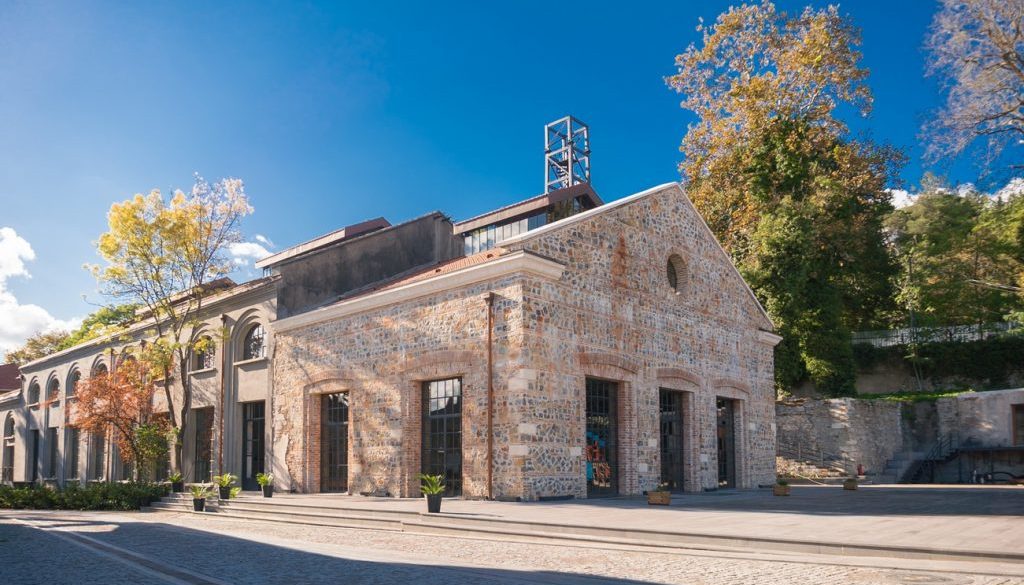Projectnaam
Beykoz Kundura – Theater en bioscoop Istanbul -Turkije
Projecttype
Cultuur / Herbestemming
Opdrachtgever
Yildrim Group
Bouwjaar
2015
Programma
Theaterzaal / Filmzaal / Foyers / Multifunctionele ruimten / Backstage / Laden en Lossen
Omvang
ca. 4.000 m2
Architecten
Roel ten Bras
Medewerkers
Michel Brons
Beykoz Kundura Cinema & Studios
Om een oude elektriciteitscentrale te transformeren in een multifunctioneel theater zijn wij gevraagd deel te nemen in een internationaal, multidisciplinaire designteam. Het architectonisch ontwerp richt zich op zoveel mogelijk behoud van de historische gebouwen en hun componenten en het maximaliseren van de mogelijkheden voor meervoudig gebruik.
De voormalige elektriciteitscentrale heeft oorspronkelijk twee bouwperiodes. De oudste delen (de buitenste delen van het complex, waarschijnlijk gebouwd voor een andere functie) zijn afkomstig uit het midden van de 19e eeuw. De middelste drie gebouwen dateren van net na 1900. De gebouwen zijn in goede staat en vele historische details en installatie-onderdelen worden bewaard. Zowel architectonisch ontwerp als het theater technisch ontwerp richt zich op:
– Zoveel mogelijk behoud van historische gebouwen en hun onderdelen;
– Multifunctionaliteit en het maximaliseren van de mogelijkheden voor meervoudig gebruik;
– Verbeterde ruimtelijke relatie tussen de 5 afzonderlijke gebouwen van het complex:
– Een volledig vlakke vloer zaal voor 200 bezoekers, zonder afbreuk te doen aan het historische gebouw.
Het bestaande complex bestaat uit vijf gebouwen. Vanuit het p.v.e. beredeneerd kon het theater alleen in de middelste – de grootste – worden gerealiseerd. De gebouwen aan de rechterkant huisvesten entree en foyer. De gebouwen aan de linkerzijde zijn aan multi-functioneel, maar geschikt voor bioscoop. Het theater is toegankelijk van beide kanten.
De belangrijkste architectonische ingreep is de Vista. De Vista wordt gemaakt door 4 meter hoge – afsluitbare – openingen in de scheidingswanden tussen de afzonderlijke gebouwen. Op festivals en evenementen is het complex dus te ervaren als een coherent geheel. Een andere belangrijke ruimtelijke ingreep is bijna het gehele complex te voorzien van een kelder. Het verhoogt de capaciteit van de publieke ruimte. Voorzieningen worden hier ondergebracht, zodat vanaf de begane grond, op straatniveau, de oude fabrieksgebouwen in hun oorspronkelijke fysieke toestand kunnen blijven. De kelder achter het gebouw biedt alle noodzakelijke backstagevoorzieningen.
De theatertechniek is zeer compleet, maar voorzichtig en terughoudend in het ontwerp. De benodigde installaties en lichte bruggen zijn ontworpen rond het historische gebouw en bouwdelen.
To transform an old power plant into a multifunctional theater TenBrasWestinga – ARCHITECTURE / INTERIOR PLANNING is asked to participate in a multidisciplinary design. The architectural design focusses on as much as possible preservation of historic buildings and their components and maximizing opportunities for multiple use.
The former power station has originally two construction periods. The oldest parts, the outer parts of the complex, probably built for a different function, are from the mid-19th century. The middle three buildings date back to just after 1900. The buildings are in good condition and many historical details and installation parts are preserved. Both architectural design as the theater technical design focuses on:
– As much as possible preservation of historic buildings and their components;
– Multifunctionality and maximizing opportunities for multiple use;
– Improved spatial relationship between the 5 individual buildings of the complex:
– A full flat floor hall for 200 visitors without compromising the historic building.
The major architectural intervention is Vista. The Vista is created by 4 high – lockable – wall openings in the partition walls between the individual buildings. At festivals and events complex is thus experienced as a coherent whole.
The main spatial intervention is the basement of almost the entire complex. It increases the capacity of the public space. Provisions are housed here, so from the ground floor, at street level, the old factory buildings can remain in their original physical state. The basement behind the building provides all the necessary backstage areas.
The stagecraft is very complete, but cautious and reticent in design. The required installations and light bridges are designed around the historical construction and building components.
The existing complex consists of five buildings. From the brief argued the theater could only be realized in the middle – the largest -. The buildings to the right of it contain entrance and foyer. The buildings to the left are to bemulti-functional, but are suitable for cinema. The theater is accessible from both sides.
The new use of the former factory has an effect on the public space in front of the building. To stimulate the natural course for the new entries and present the new public character of the building, it is necessary to shape the space in front of it as a square.
Both the new public space as the new mutli-functional theater building will be a unique experience for all types of visitors.

